Things you must know to understand the mysterious world of Ancient Egypt
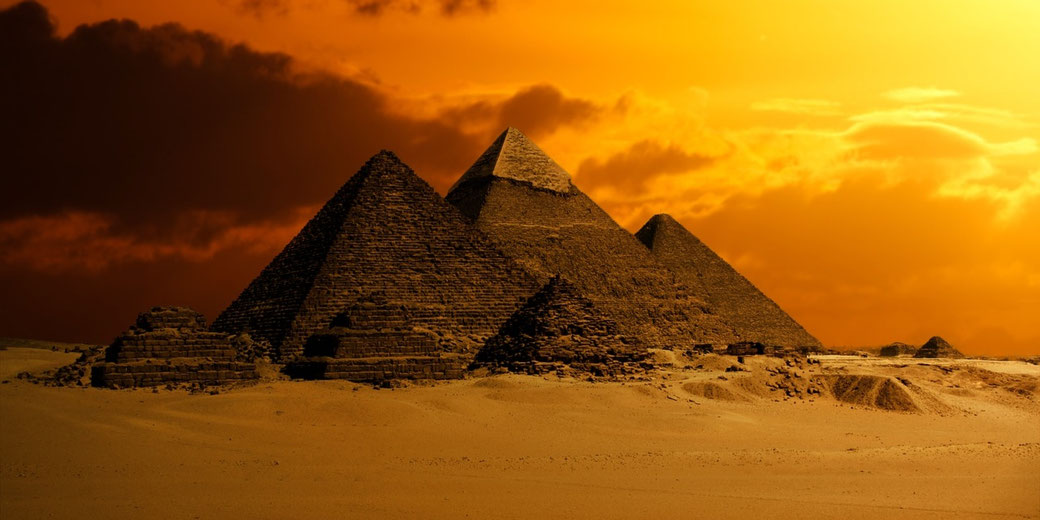
Ancient Egypt is one of the most fascinating and well-known civilizations in history. Located in northeastern Africa, this civilization thrived along the fertile banks of the Nile River.
For over three thousand years, the ancient Egyptians developed a society that became renowned for its advances in architecture, art, and technology.
As a result, Egypt was home to some of the most impressive achievements in architecture, art and technology of any culture in the ancient world.
The central importance of the river Nile in Egypt
One of the most important things to understand about Ancient Egypt is the centrality of the River Nile.
It is the most prominent geographical feature of ancient Egypt, as it runs through the length of the country.
The Egyptians relied upon it for all of their drinking water and farming activity. In addition, it was the source of much of their food, as it was home to a wide variety of animal and plant life.
As a result, almost all of the ancient Egyptian settlements were found along its riverbanks.
Inf act, the Nile was the main reason people were able to survive in Egypt long-term in its hot, dry climate.
The Nile flows from south to north, which is unusual for a major river. It originates much further south of Egypt and is the result of two other water sources that merge in the region of modern Sudan.
These two rivers are known as the White Nile and the Blue Nile, which both begin in the highlands of central Africa.
During the wet season every year, heavy rains in the Ethiopian Highlands generates a huge volume of water that rushes down into Egypt via the Nile, and creates an annual flood called the 'inundation'.
This annual flooding of the Nile deposited nutrient-rich silt along the riverbanks of Egypt.
When the floods receded, the Egyptians were able to grow their crops in this soil and produce significant crop yields that could feed their populations.
In addition to agriculture, the ancient Egyptians also used this silt-rich soil to make a type of bricks called mudbricks.
In fact, mudbricks were the most commonly used material in the construction of homes and other buildings throughout ancient Egypt.
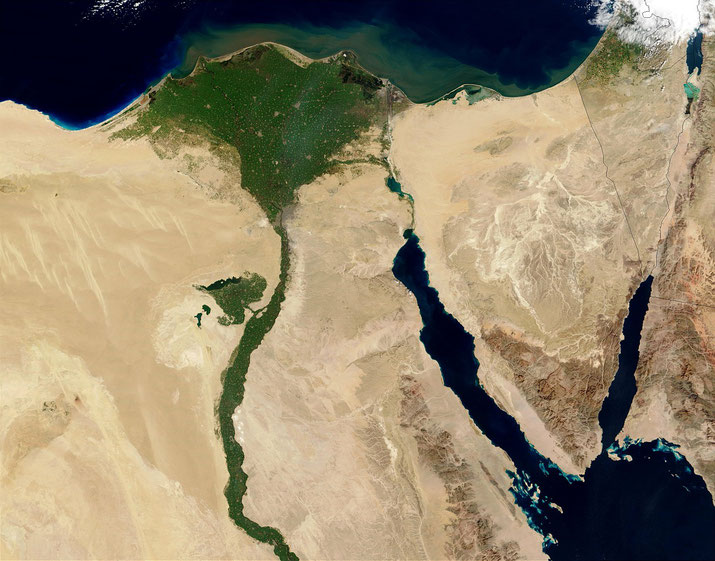
The danger of the desert
The reason the Nile was so important to the Egyptians is that most of their country was made up of desert.
In fact, the Sahara Desert, one of the largest deserts in the world, covers over 96% of the country: mostly located to the west of the Nile.
Although the desert was largely uninhabited due to its harsh climate, there were some scattered oases where people could find water and shelter.
In ancient history, these oases were important stops for traders and travelers attempting to cross the desert safely.
Since geography and the different feature of their land were so important to the Egyptians, they used different words to describe the two most prominent areas.
They used the word kemet to describe the banks along the Nile, where almost every live.
This word means 'black land', which is likely a reference to the dark color of the soil along the Nile River, through the Delta region, and the Faiyum.
In many inscriptions, the Egyptians called themself the 'people of kemet' or the 'people of the black land'.
The other term they used was deshret, which means 'red land'. This is likely a reference to the red color of the desert sand.
In common usage, the deshret included the areas of the Western and Eastern Deserts, as well as the Sinai Peninsula.
Even when you travel through modern Egypt, you can see the two distinct soil types sitting side by side: the red sand of the desert reaches right up to the thin strip of black soil along the banks of the Nile.
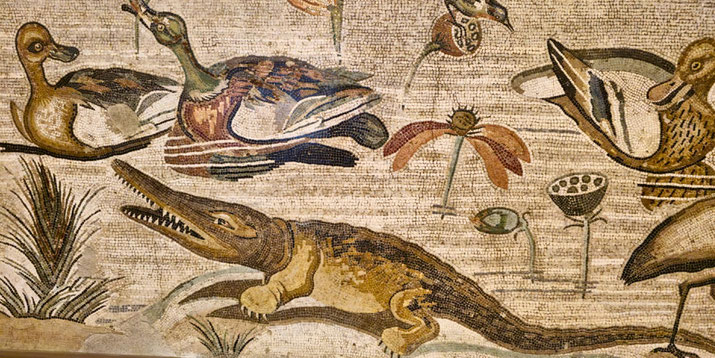
Why was ancient Egypt known as the 'Two Lands'?
When the Ancient Egyptians wanted to describe the country or kingdom they lived in, they often referred to it as the "Two Lands".
This seems like an odd description to us, but it was developed very early in Egyptian history.
Before the first pharaoh, there appeared to be two different kingdoms in Egypt.
The was, called Upper Egypt, and was located in the southern part of the country.
Powerful rulers dominated this region from cities around the region of Thebes.
The second land, called Lower Egypt, was located in the northern part of the country and was centered around the city of Memphis.
It can be confusing to try and remember the fact that Lower Egypt is in the north, while Upper Egypt is in the south, since we use modern compass directions when talking about 'upper' and 'lower'.
However, the Egyptians didn't use modern compasses. Instead, they focused on the direction the water travelled along the Nile.
As a result, the terms "Upper" and "Lower" refer to the flow of the Nile. Therefore, Upper Egypt is to the south because this is where the river begins, while Lower Egypt is in the north because that is where the water flows out, into the Mediterranean Sea.
As the Nile gradually gets close to the Mediterranean, it stops being a single river and branches out into several smaller rivers.
This creates a triangular shaped area of fertile agricultural land called the Nile Delta.
As a result, this region was a crucial place for Egyptians to grow large quantities of food, which made them very wealthy.
In particular, the famous papyrus plant, which was used to make paper, primarily grew in the Nile Delta.
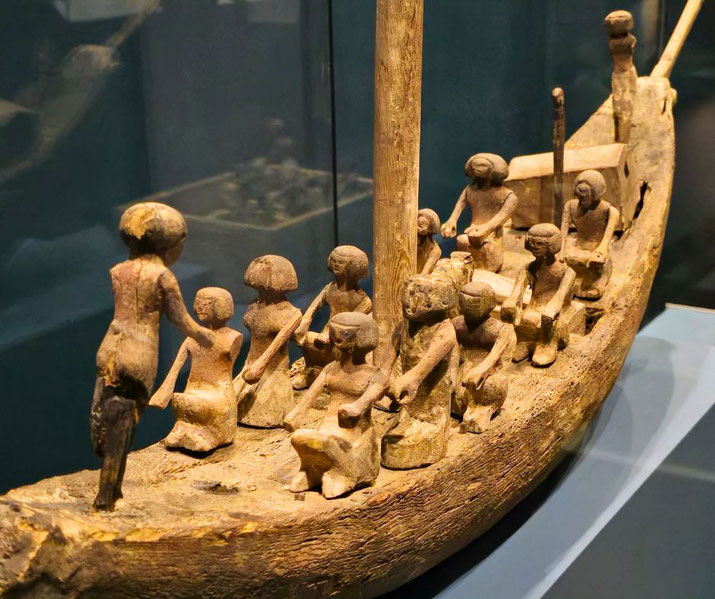
Why are there pyramids in Egypt?
Maybe the most iconic and well-known feature of ancient Egyptian civilization are the pyramids.
These massive structures were built as tombs for pharaohs and their families, and the Great Pyramid of Giza is the largest and most famous of all of them.
It is also one of the Seven Wonders of the Ancient World.
However, not all pharaohs were buried in pyramids. The pyramid was a specific architectural choice that fell out of favor in later dynasties, with many later pharaohs choosing to be buried in elaborate underground tombs in the Valley of the Kings.
The pyramids were built because the ancient Egyptians believed that in order to achieve immortality, they had to preserve their bodies after death.
To do this, they mummified their dead and placed them inside sarcophagi in tombs.
As a consequence, the pyramids were designed to protect these sarcophaguses from grave robbers.
The ancient Egyptians believed that when a pharaoh died, he would be reborn into the afterlife.
So, to prepare for this journey, they also placed items that would be useful to him in his tomb, such as food, water and weapons.
In addition, they also placed statues of gods inside the tomb to protect him on his journey.
How did ancient Egypt begin?
The first humans began to settle along the Nile from around 6000 BC, which is when archaeologists detect the first evidence of agricultural activity.
At that point in history, separate, small communities developed, but there was no unified empire or culture.
Ancient Egyptian civilization as we now know it is thought to have begun around 3100 BC, which is when the two lands of Upper and Lower Egypt were finally unified under one ruler.
This first ruler became known as the first pharaoh, called Narmer (or Menes in Greek).
After successfully conquering the Delta region, he established the capital of ancient Egypt at Memphis nearby to ensure he maintained control of this valuable agricultural area.
For the next three thousand years, ancient Egyptian civilization flourished, and the people built great pyramids, temples, and monuments.
During its history, Egypt became famous for rapid advances in art, literature, mathematics and even astronomy.
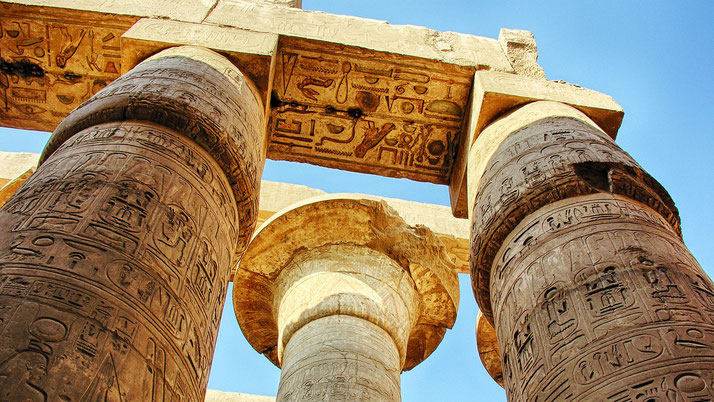
The division of Egyptian history in 'three kingdoms'
Since the history of ancient Egypt spans an incredible 3000 years, historians have tried to divide it into smaller periods of time in order to make it easier to study.
As a result, Egypt is said to have three major periods, known as 'kingdoms': the Old Kingdom, Middle Kingdom and the New Kingdom.
Each of these kingdoms represents a long period of time in Egyptian history where the Egyptians enjoyed peace in the land, had increasing wealth, and could project its power over neighbouring regions.
This stability and prosperity was often the result of a stable royal family, where a pharaoh could pass power onto his descendants with very little conflict.
However, between each of these kingdoms were times of civil war called 'intermediate periods'.
Intermediate periods were when there was no clear ruler over all of Egypt, and instead, many local warlords fought for control.
This state of war often meant that Egypt lost a lot of its income from trade, leading to periods of poverty and even famine.
The first of the kingdoms was called the Old Kingdom (c. 2686-2150 BC) and is often simply called the 'Age of the Pyramids'.
This because it was during this time that the construction of the three great pyramids at Giza by the pharaohs Khufu, Khafre, and Menkaure too place.
The Middle Kingdom (c. 2055-1650 BC) was a time of stability and prosperity after a period of upheaval during the First Intermediate Period (2150-2055 BC).
It was during this time that the city of Thebes became an important religious centre.
One of the most famous Pharaohs from this period is Amenemhat III (1849-1797 BC).
The New Kingdom (c. 1550- 1070 BC) was the most powerful period of ancient Egyptian civilization.
Pharaohs such as Hatshepsut (1479-1458 BC), Thutmose III (1458-1425 BC), Akhenaten (1353-1336 BC) and Ramses II (1279-1213 BC) expanded Egypt's territory and influence greatly during this time.
At its peak during the New Kingdom period, ancient Egypt's population is estimated to have been between 3 and 5 million people, which was supported by the agricultural bounty provided by the Nile River's annual inundation.
However, the New Kingdom came to an end with the death of Ramesses XI. After his death, Egypt fell into a state of decline and it was conquered by a series of foreign powers, including the Assyrians, the Babylonians and the Persians.
then, in 332 BC, Alexander the Great defeated the Persians conquered Egypt. He established a new city called Alexandria, which became the new capital of the region.
Alexander's seizure of ancient Egyptian ushered in a new era known as the Ptolemaic Kingdom (332-30 BC).
The Ptolemaic period was when Egypt was ruled by a dynasty of Greek rulers who were descended from Alexander the Great's general, Ptolemy I Soter (367-283 BC).
The most famous ruler of this period was Cleopatra VII (69-30 BC), who would be the last pharaoh of Egypt.
Finally, in 30 BC, Rome conquered Egypt and it became a province of its growing empire.
As a result, the Ancient Egyptian civilization came to an end.
What were the dynasties of ancient Egypt?
As helpful as it is the divide Egyptian history in this way, the different kingdoms still cover several centuries each.
So, it was important to find a way to divide each of the kingdoms into smaller blocks of time as well.
The 3rd century BC ancient Greek historian, Manetho, helped to this by describing separate 'dynasties'.
A dynasty was a series of pharaohs who typically came from the same family. A dynasty could come to an end when the last Pharaoh of that family group died without an heir.
However, a dynasty didn't always end when a pharaoh died without an heir; sometimes a dynasty could end due to invasion, and internal conflict.
However, these dynasties have become a useful way of talking about smaller time periods within each of the three kingdom periods.
For example, the Old Kingdom included the 3rd, 4th, 5th and 6th Dynasties.
It then came to an end with the fall of the 6th Dynasty (2345-2150 BC) when the last Pharaoh, Pepi II, died without an heir, which ushered in the First Intermediate Period (c. 2150-2055 BC).
Then, the Middle Kingdom was divided into the 11th, 12th and 13th Dynasties.
The last of the Middle Kingdom dynasties, the 13th (1773-1650 BC), was brought to an end by increased instability and led to the Second Intermediary Period.
Finally, the New Kingdom was divided into the 18th, 19th and 20th dynasties.

Further reading
What do you need help with?
Download ready-to-use digital learning resources
Copyright © History Skills 2014-2025.
Contact via email
With the exception of links to external sites, some historical sources and extracts from specific publications, all content on this website is copyrighted by History Skills. This content may not be copied, republished or redistributed without written permission from the website creator. Please use the Contact page to obtain relevant permission.





